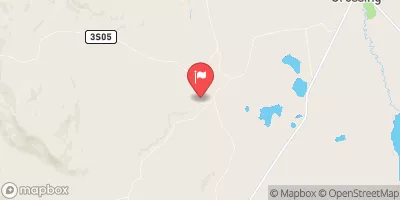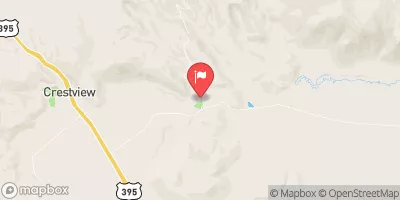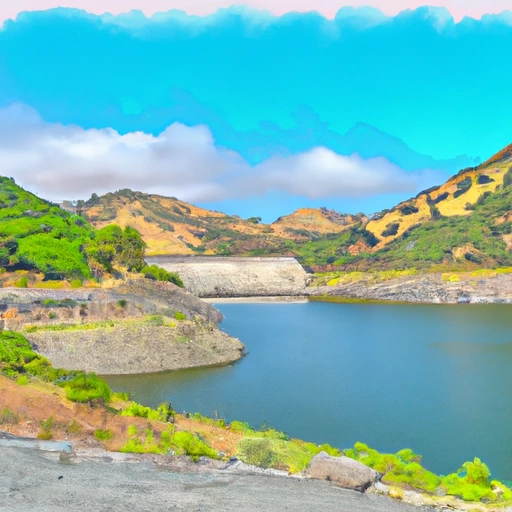Summary
The reservoir is fed by snowpack from the surrounding mountains and by the Tinemaha Creek, which flows into the reservoir from the south. The hydrology of the reservoir is managed by the Los Angeles Department of Water and Power (LADWP), which controls the flow of water in the Tinemaha Creek and the diversion of water to irrigation canals. The reservoir is also used for recreational purposes, including fishing and boating, although access is limited. The surrounding area is used for agriculture, with alfalfa and other crops grown using water from the reservoir. The Tinemaha Reservoir is an important source of water for the Owens Valley, and its management is critical for the sustainability of the local ecosystem and agricultural economy.
Reservoir Details
| Storage 24hr Change | 3.24% |
| Percent of Normal | 68% |
| Minimum |
1,117.0 acre-ft
2023-11-12 |
| Maximum |
9,294.0 acre-ft
2023-07-26 |
| Average | 4,430 acre-ft |
| Dam_Height | 32 |
| Hydraulic_Height | 22.5 |
| Drainage_Area | 1915 |
| Year_Completed | 1928 |
| Nid_Storage | 16405 |
| Primary_Dam_Type | Earth |
| Surface_Area | 2098 |
| Hazard_Potential | High |
| River_Or_Stream | Owens River |
| Dam_Length | 5800 |
| Nid_Height | 32 |
Seasonal Comparison
Storage Levels
Pool Elevation Levels
Top Conserv Storage Levels
Inflow Levels
Weather Forecast
Nearby Streamflow Levels
Dam Data Reference
Condition Assessment
SatisfactoryNo existing or potential dam safety deficiencies are recognized. Acceptable performance is expected under all loading conditions (static, hydrologic, seismic) in accordance with the minimum applicable state or federal regulatory criteria or tolerable risk guidelines.
Fair
No existing dam safety deficiencies are recognized for normal operating conditions. Rare or extreme hydrologic and/or seismic events may result in a dam safety deficiency. Risk may be in the range to take further action. Note: Rare or extreme event is defined by the regulatory agency based on their minimum
Poor A dam safety deficiency is recognized for normal operating conditions which may realistically occur. Remedial action is necessary. POOR may also be used when uncertainties exist as to critical analysis parameters which identify a potential dam safety deficiency. Investigations and studies are necessary.
Unsatisfactory
A dam safety deficiency is recognized that requires immediate or emergency remedial action for problem resolution.
Not Rated
The dam has not been inspected, is not under state or federal jurisdiction, or has been inspected but, for whatever reason, has not been rated.
Not Available
Dams for which the condition assessment is restricted to approved government users.
Hazard Potential Classification
HighDams assigned the high hazard potential classification are those where failure or mis-operation will probably cause loss of human life.
Significant
Dams assigned the significant hazard potential classification are those dams where failure or mis-operation results in no probable loss of human life but can cause economic loss, environment damage, disruption of lifeline facilities, or impact other concerns. Significant hazard potential classification dams are often located in predominantly rural or agricultural areas but could be in areas with population and significant infrastructure.
Low
Dams assigned the low hazard potential classification are those where failure or mis-operation results in no probable loss of human life and low economic and/or environmental losses. Losses are principally limited to the owner's property.
Undetermined
Dams for which a downstream hazard potential has not been designated or is not provided.
Not Available
Dams for which the downstream hazard potential is restricted to approved government users.
Area Campgrounds
| Location | Reservations | Toilets |
|---|---|---|
 Tinemaha Campground
Tinemaha Campground
|
||
 Tinnemaha
Tinnemaha
|
||
 Taboose Creek County Park
Taboose Creek County Park
|
||
 Goodale Creek
Goodale Creek
|
||
 Goodale Creek Campground
Goodale Creek Campground
|
||
 Big Pine Triangle Park
Big Pine Triangle Park
|





 Tinemaha
Tinemaha
 Tinemaha Reservoir
Tinemaha Reservoir
 Wilderness Boundary To Private Property
Wilderness Boundary To Private Property